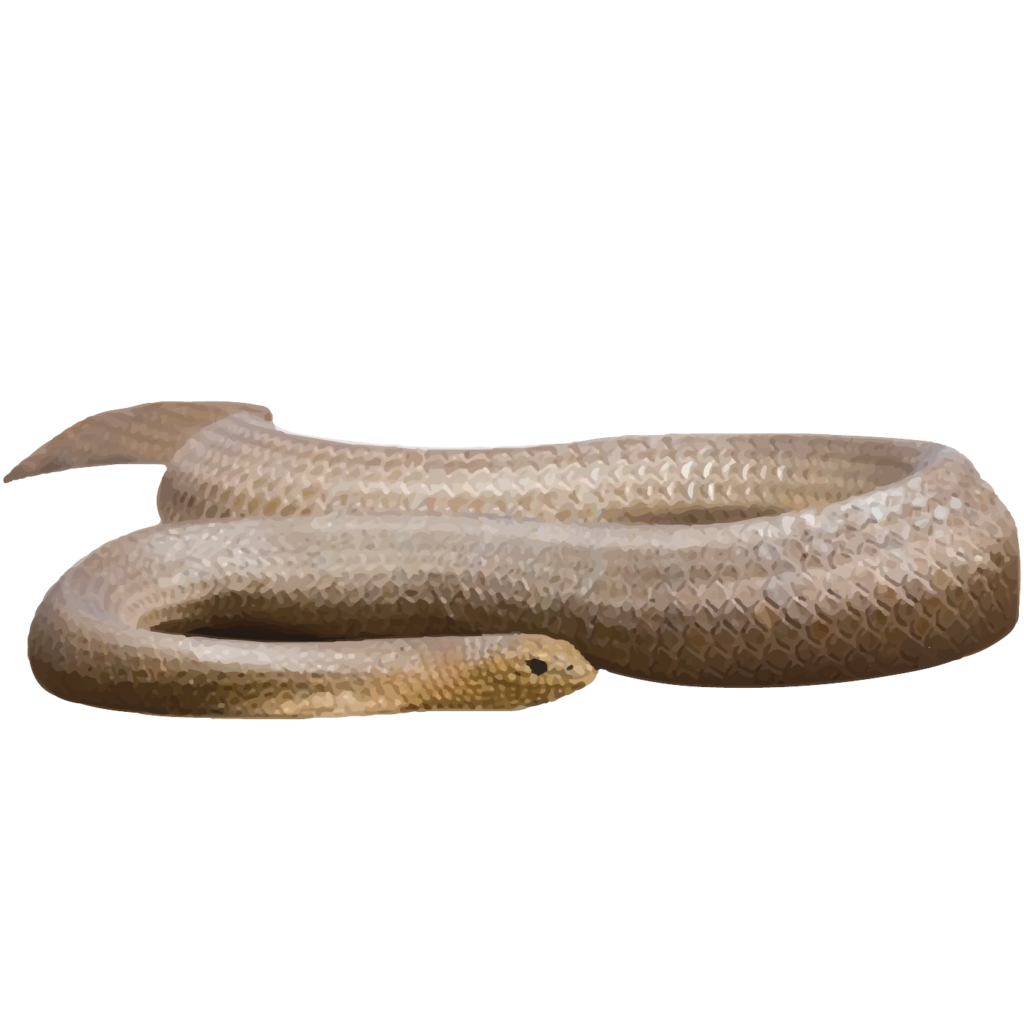Olive Sea Snake (Aipysurus laevis)

- Habitat: Coral reefs, shallow coastal waters.
- Distribution: Tropical waters of India.
- Diet: Shrimp, crabs, file shells, 17-19 fish species and fish eggs.
- Size: 1.2 to 2 metres
The Olive Sea Snake (Aipysurus laevis) is a venomous sea snake found in the warm coastal waters of the Indo-Pacific region. Known for its robust build and olive coloration, this species is highly adapted to marine life. Here are some key details about the Olive Sea Snake:
Physical Description:
- Appearance: The Olive Sea Snake has a cylindrical body covered in smooth scales with a uniform olive, grayish, or purplish coloration. It lacks the banding pattern seen in many other sea snakes. The head is relatively small and tapers into a blunt snout.
- Size: Adults typically measure between 1 to 1.5 meters (3.3 to 5 feet) in length, though some individuals can reach up to 2 meters (6.6 feet).
- Tail: The tail is laterally flattened and paddle-shaped, which is characteristic of sea snakes and aids in swimming.
Habitat:
- Geographical Range: The Olive Sea Snake is found in the coastal waters of the Indo-Pacific region, particularly around northern Australia, Papua New Guinea, and parts of Southeast Asia.
- Preferred Habitat: It inhabits coral reefs, rocky shores, and sandy bottoms. It is most commonly found in shallow waters up to 80 meters deep but can occasionally be found at greater depths.
Conservation:
- Status: The Olive Sea Snake is not currently considered endangered and is classified as Least Concern by the IUCN. However, it faces threats from habitat destruction, pollution, and accidental capture in fishing nets.
- Protection: Conservation efforts focus on habitat preservation, reducing bycatch, and educating the public about the ecological importance of sea snakes.
Importance:
- Ecological Role: The Olive Sea Snake plays a crucial role in coral reef ecosystems by controlling populations of fish and other prey species.
- Human Interaction: While its venom is highly toxic, bites to humans are rare and typically occur when the snake is handled or accidentally caught in fishing gear. Its generally docile nature means it poses little threat to divers who respect its space.
